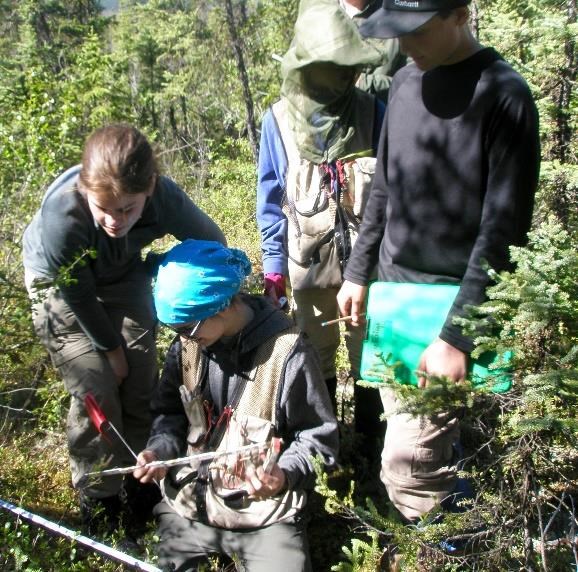Part of a series of articles titled National Park Service Alaska Region Fire Ecology Annual Report Calendar Year 2016.
Article
Fire Ecology Annual Report 2016 - Communicating Results
By Jennifer L. Barnes and Jennifer L. Hrobak

Carol Scott (2016)
June continued to be a busy month for outreach with presentation/field day sessions for two different programs. First, the regional fire ecologist participated in a teacher intensive in Denali National Parks. Teachers learned about fire in the park though a day-long field trip investigating previous fires. Then, the assistant fire ecologist worked with the North for Science Program (co-sponsored by NPS FAPLIC) as one of subject matter experts on a week-long science education program for small group 8th grade students. The group traveled north through Gates of the Arctic learning about monitoring and evaluating various natural science topics including wildfire. For this topic, students (and education program leaders) learned about the natural role of fire in Alaska through a classroom presentation and also participated in a field session to observe and collect fire monitoring data in the 2005 Chapman Creek Fire. Part of this project, including travel for the assistant fire ecologist and the purchase of educational field monitoring equipment, was funded by a NPS Fire Communication and Education Grant.
The same equipment was used by NPS communication and outreach staff in August for an educational program at Coal Creek Camp (YUCH) with Eagle School students. Unfortunately, the fire program could not attend but were able to provide guidance, training, and materials to the outreach staff. They were successful in presenting a fire ecology session and re-measuring plots in the 2004 Woodchopper fire with the students. Later in August, the assistant fire ecologist and the western area fire management officer presented basic Alaskan fire ecology information and the potential impacts of climate change to a group of teachers and science educators/communicators at the Earth to Sky program (co-sponsored by NPS FAPLIC).
In additional to these activities, formal oral and poster presentations were given at the NPS Centennial Science Symposium in October regarding the use of satellite imagery to improve our fire history records and new tools and products available to fire managers. The regional fire ecologist discussed the impacts of climate change and burn severity on fires in Alaska during a brief to the Washington DC State Envoy on Climate Change and spoke specifically on tundra fires and climate change to the Alaska Natural Resource & Outdoor Education (ANROE) Association. A video of the presentation to the ANROE Association is available here: http://www.anroe.net/educator-and-student-resources/youtube-videos/).
Last updated: October 26, 2021
